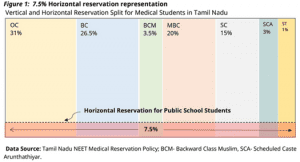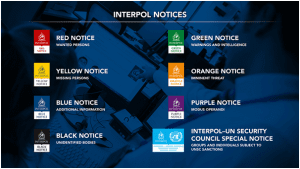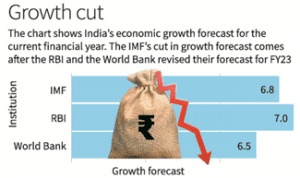POLITY AND CONSTITUTION
1. WHAT LAWS REGULATE SURROGACY IN INDIA?
THE CONTEXT: Recently, the Tamil film celebrities are under the scanner after announcing that they have become parents of twin boys. The state government is now inquiring if the power couple violated the country’s surrogacy laws.
THE EXPLANATION:
What are the conditions for allowing surrogacy, as per the law?
- In India, for a long time, foreign couples opted for surrogacy due to its good and affordable medical system. Over the years, the government has put restrictions on the practice with the stated aim of regulation.
- Surrogacy is defined by law as “a practice whereby one woman bears and gives birth to a child for an intending couple” and intends to hand over the child to them after the birth, as per The Surrogacy (Regulation) Act, 2021 (SRA).
- It further allows for surrogacy to be available only to infertile Indian married couples. The other legislation on this matter, the Assisted Reproductive Technology (ART) (Regulation) Act, 2021, defines ART procedures as all techniques that attempt to obtain a pregnancy by handling the sperm or the oocyte (the immature female egg) outside the human body and transferring into the reproductive system of a woman.
- This is open to married couples, live-in partners, single women, and also foreigners. ART procedures include gamete donation, intrauterine insemination, and in-vitro fertilisation or IVF.
The SRA Act says:
- The surrogate should be married and have a child of her own. Restricting altruistic surrogacy to legally wedded infertile Indian couples, the Act sets an age limitation for the couple where a husband must be between 26 and 55 years of age and a wife between 23 and 50 years.
- Further, Indian couples with biological or adopted children are prohibited to undertake surrogacy, save for some exceptions such as mentally or physically challenged children, or those sufferings from a life-threatening disorder or fatal illness.
How does opting for surrogacy work?
- Relevant authorities have been set up by the Act at several levels to check whether these specifications have been met. All surrogacy clinics must be registered with the government and only then can they conduct the procedure. According to the Health Ministry, the estimated number of clinics practising surrogacy in India is likely to be less than 1,000.
- The central and the state governments are to constitute the National Surrogacy Board (NSB) and the State Surrogacy Boards (SSB), respectively. Functions of the NSB include advising the central government, laying down the code of conduct of surrogacy clinics and reviewing the implementation of the Act. Similarly, appropriate authorities are constituted at national and state levels to grant or suspend clinics’ licences, to check on complaints of breach of the Act’s provisions and carry out other similar tasks.
For example, - Certificates of proven infertility/expert medical reports of either spouse or of intending couple from a District Medical Board are mandatory. A certificate of eligibility issued by the appropriate authority shows the criteria have been met – both by the to-be parents and the surrogate woman.
- Other requisite authorities, such as the Director or in-charge of the surrogacy clinic must also be satisfied that conditions have been met.
- Commercial surrogacy, among other offences, can lead to imprisonment for a term of at least 10 years and a fine extending to Rs 10 lakh.
2. BOMBAY HC ASKS UNION GOVT TO MAKE IPC SECTION 498A ‘COMPOUNDABLE’
THE CONTEXT: Recently,the Bombay high court has asked the Union government to consider making cases under the Indian Penal Code (IPC) Section 498A (cruelty to wife by husband, relatives) a compoundable offence.
THE EXPLANATION:
A division bench of Justices in an order said the importance of making IPC Section 498A ‘compoundable’ can hardly be overlooked or understated, noting that every day a minimum of 10 petitions are heard seeking quashing of cases under the section by consent since it is non-compoundable.
Description of IPC Section 498A:
According to section 498A of Indian penal code, Whoever, being the husband or the relative of the husband of a woman, subjects such woman to cruelty shall be punished with imprisonment for a term which may extend to three years and shall also be liable to fine.
What are Non-Compoundable Offences?
- Non-Compoundable offenses are some offenses, which cannot be compounded. They can only be quashed. The reason for this is, because the nature of the offense is so grave and criminal, that the Accused cannot be allowed to go scot-free. Here, in these types of cases generally, it is the “state”, i.e. police, who has filed the case, and hence the question of the complainant entering into compromise does not arise.
- All those offenses, which are not mentioned in the list under Section (320) of CrPC, are non-compounds.
- Under a non-compoundable offense, a private party as well as the society, both are affected by such offenses.
- In a Non-compoundable offense, no compromise is allowed. Even the court does not have the authority and power to compound such an offense. A full trial is trial that ends with the acquittal or conviction of the offender, based on the evidence given.
Example of Non-Compoundable Offences (Where Court’s Permission is Required):
- Voluntarily causing hurt by dangerous weapons or means.
- Causing grievous hurt by doing an act so rashly and negligently as to endanger human life or the personal safety of others.
- Wrongfully confining a person for three days or more.
- Assault or criminal force to woman with intent to outrage per modesty.
3. TAMIL NADU: UNDERSTANDING THE IMPACT OF THE 7.5% RESERVATION FOR GOVT SCHOOL STUDENTS IN NEET
THE CONTEXT: In April 2022 the Madras High Court upheld the constitutional validity of a State law passed in October 2020 to provide 7.5% horizontal reservation to students who pass out of government schools and clear the National Entrance-cum-Eligibility Test (NEET), in medical admissions.
THE EXPLANATION:
Why was Tamil Nadu opposed to NEET?
- Among the States that were strident in their opposition to NEET (National Eligibility-cum-Entrance Test) was Tamil Nadu. The opposition was manifest in protests on the streets and in the corridors of justice.
- One of the primary arguments that were made was that NEET would push certain categories of students out of the race for MBBS degrees, and its goal of providing equitable opportunities for all would be frustrated.
- Students from government schools and rural areas would not be able to afford the coaching that would be essential for the competitive test, the State government argued. The State wanted to continue its own criteria for entry of students from government schools and rural areas into medical colleges — candidates were being accommodated with a computed aggregate score of relevant subjects in the Class XII examination.
The Special Case:
- Tamil Nadu is a special case when it comes to both reservations and NEET, the entrance test for medical education.
- Nearly 69% of the seats are reserved in the state through a constitutional amendment – much above the 50% limit that applies to the rest of India. Additionally, 97.2% of the population in the state is classified as a Scheduled Caste, Scheduled Tribe or Other Backward Class – the highest in India.
Understanding the 7.5% quota
- The existing reservation structure for medical students in Tamil Nadu is 31% for Open Competition (OC), 30% for Backward Class (out of which 3.5% is reserved for BCM, 20% for MBC, 18% for SC and 1% for ST. Within this, 7.5% of the community within each can attain reservation.
- The horizontal quota ensures that there is a minimum representation of a specific group within each of the vertical quotas. For example, a women’s horizontal quota of 10% would mean that at least 10% of the seats in OC, BC, MBC, SC, and others are filled with women candidates.
- This means that the 7.5% quota doesn’t change the 69% caste-based reservation, but ensures that 7.5% within each is reserved specifically for the students of government schools.

Who goes to government schools?
- Analysing the main provisional merit list, and the merit list specifically for the government school pupils for the 2020-21 session, allows us to compare the community mix of the two lists. In the government students list, MBC students comprise 34% as compared to 23% in the main list i.e., approximately 48% more in proportionate terms.
- In contrast, the BC students show a proportionate decrease of 24% – from 45% in the main list to 35% in the government school students list. This indicates the higher level of deprivation within the MBC as compared to the BC category.
- The third category of SCs also shows that there is an increase of 20% in the government school students list as compared to 17% for the main list. These three together account for 90% of the government school list.
What lies a head?
- This innovative reservation policy adopts a wider definition of deprivation than mere caste. While caste is a rigid and static characteristic of an individual and family, schooling is not. Improved economic outcomes of families lead to students being enrolled into private schools i.e., the scope of this policy is dynamic rather than static.
- This policy’s success can be seen from the numbers which have clearly improved the representation of government school students within undergraduate admissions. It further needs to be investigated if this policy has impacted different castes within the same group.
- The lopsided distribution of benefits within the same block of castes is an identified problem, and whether this policy has helped reach those untouched by reservations would be critical to examine.
INTERNATIONAL RELATIONS
4. HISTORIC DEAL BETWEEN ISRAEL-LEBANON: TERMS, SIGNIFICANCE
THE CONTEXT: In a major diplomatic breakthrough, Israel announced a “historic” deal with Lebanon, aimed at resolving a long-running maritime border dispute over Mediterranean waters. Israel and Lebanon do not have official diplomatic relations and the two countries remain technically at war.
THE EXPLANATION:
A long history of conflict
- Israel and Lebanon have been at war for decades since 1948, with both countries staking claim over a swathe of territory in the Mediterranean Sea, which contains part of the Karish gas field and Qana, a prospective gas field.
- Negotiations pertaining to the Israeli-Lebanese border dispute over gas-rich waters off the countries’ Mediterranean coasts have been ongoing since October 2020.
- The Karish gas field, which is being developed by Israel, has come under threat from Hezbollah, Lebanon’s powerful political and militant group backed by Iran.
What the agreement does:
- While Israel is already producing natural gas at nearby fields, what this agreement does is that it resolves a territorial dispute in the eastern Mediterranean sea, in an area that Lebanon wants to explore for natural gas.
- The gas field in question is located on the maritime boundary between the two countries and this agreement would allow both countries to get royalties from the gas. It also sets a border between the maritime waters of Lebanon and Israel for the first time.
- According to a New York Times report, the agreement is also expected to avert the immediate threat of conflict between Israel and Hezbollah militants in Lebanon, after fears of escalation if negotiations fell apart.
- The report states that analysts hope that the agreement will create new sources of energy and income for both countries, particularly important for Lebanon, which is facing a crippling energy and financial crises.
- It could also have a potentially wider impact: it would likely provide Europe with a potential new source of gas amid energy shortages caused by the Russian invasion of Ukraine.
Crucial gas exports
- As for what the deal looks like, the U.S. proposal essentially divides the sea border in two, with the first 3 miles from the shore marked as Israel’s border, which has been treated as such for several years. Beyond that, the border will track along a line demarcated by Lebanon, called Line 23, meaning that each country’s exclusive economic zone (EEZ) will be clearly outlined.

5. INDIA’S REQUEST FOR ACTION AGAINST PANNUN REJECTED: WHAT IS THE INTERPOL, AND WHAT IS A RED NOTICE?
THE CONTEXT: Recently,the Interpol has rejected a second request by India to issue a Red Corner Notice against Gurpatwant Singh Pannun, the Canada-based founder and legal advisor of the pro-Khalistan outfit Sikhs for Justice (SFJ), whom the Union Ministry of Home Affairs has listed as a “terrorist” under the Unlawful Activities (Prevention) Act (UAPA).
THE EXPLANATION:
- The Interpol has said India has failed to provide sufficient information to support its case, and that the UAPA has been criticised for being “misused” to target minority groups and human rights activists without “respecting” their right to due process and a fair trial.
- While acknowledging that Pannun is a “high-profile Sikh separatist”, the Interpol has said that his activities have a “clear political dimension”, which cannot be the subject of a Red Corner Notice according to Interpol’s Constitution.
What is the Interpol?
- The Interpol, or International Criminal Police Organization, is an inter-governmental organisation comprising 195 member countries, which helps police forces in all these countries to better coordinate their actions. According to the Interpol website, the organisation enables member countries to share and access data on crimes and criminals, and offers a range of technical and operational support.
- The Interpol general secretariat coordinates the organisation’s day-to-day activities. It is run by a secretary general (currently Jurgen Stock of Germany, who has been Interpol’s chief executive since 2014), with its headquarters in Lyon, France, with a global complex for innovation in Singapore, and several satellite offices in different regions.
TYPES OF NOTICES:

ECONOMIC DEVELOPMENTS
6. IMF CUTS INDIA’S FY23 ECONOMIC GROWTH TO 6.8%, SAYS WORST YET TO COME FOR GLOBAL ECONOMY
THE CONTEXT: According to the International Monetary Fund,the world, including India, will experience an overall slowdown in the next year (2023) owing to the impact of the Russia-Ukraine war, tightening monetary conditions globally, the highest inflation in decades, and lingering effects of the pandemic.
THE EXPLANATION:
- India is projected to grow at 6.8% in the current fiscal year, following 8.7% growth in fiscal year that
 ended March 31 as per figures released in the IMF’s October 2022 World Economic Outlook: Countering the Cost-of-Living Crisis at the start of the World Bank IMF Annual Meetings.
ended March 31 as per figures released in the IMF’s October 2022 World Economic Outlook: Countering the Cost-of-Living Crisis at the start of the World Bank IMF Annual Meetings. - Growth rate for this year for India has been revised downward by 0.6 percentage points relative to the IMF’s June 2022 forecast, following a weaker output in the second quarter, and subdued external demand. The forecast for the next fiscal year remains unaltered at 6.1%.
- “India has been doing fairly well in 2022 and is expected to continue growing fairly robustly in 2023.
Inflation above target
- Inflation in India was above the RBI’s target, Experts adding that the fiscal and monetary policy should be “probably be on the tightening side”. The IMF has projected 6.9% consumer price inflation this year and 5.1% next year.
- The IMF expects inflation in India to return to the inflation tolerance band… in fiscal year 2023-24, “and additional monetary tightening is going to ensure that that happens”.
- For the world as a whole, growth will slow down from 6.0% in 2021 to 3.2% in 2022 and 2.7% in 2023. This is reflective of a U.S. GDP contraction in first half of 2022, a Euro Area contraction in second half, extended COVID-19 outbreaks in China and a property sector crisis.
VALUE ADDITION:
About IMF:
- The formation of the IMF was initiated in 1944 at the Bretton Woods Conference. IMF came into operation on 27th December 1945 and is today an international organization that consists of 189 member countries.
- Headquartered in Washington, D.C., IMF focuses on Fostering global monetary cooperation, Securing financial stability, Facilitating and promoting international trade, employment, and economic growth around the world.
The IMF is a specialized agency of UN.
- The IMF became operational on 27th December 1945 with 29 member countries that agreed to bound to this treaty. It began its financial operations on 1st March 1947. Currently, the IMF consists of 189 member countries.
PRELIMS PRACTICE QUESTION
QUESTION OF THE DAY
Q1. Consider the following statements about Mahakal Temple of Ujjain:
1. It is the only jyotirlinga facing north, while all other face south direction.
2. Kalidasa has described temple in Meghadutam.
3. The present structure of temple is built by Maratha general Ranoji Shinde.
Which of the statements given above is/are correct?
a) 1 and 2 only
b) 2 and 3 only
c) 3 only
d) 1 and 3 only
Answer: B
Explanation:
About Mahakal temple:
- Puranas say that Lord Shiva pierced the world as an endless pillar of light, called the jyotirlinga. There are 12 jyotirlinga sites in India, considered a manifestation of Shiva.
- Besides Mahakal, these include Somnath and Nageshwar in Gujarat, Mallikarjuna in Andhra Pradesh, Omkareshwar in Madhya Pradesh, Kedarnath in Uttarakhand, Bhimashankar, Trimbakeshwar and Grishneshwar in Maharashtra, Viswanath at Varanasi, Baidyanath in Jharkhand, and Rameshwar in Tamil Nadu.
- Mahakal is the only jyotirlinga facing the south, while all the other jyotirlingas face east. This is because the direction of death is believed to be the south. In fact, people worship Mahakaleshwar to prevent an untimely death.
- In the early part of the Meghdutam (Purva Megha) composed in the 4th century, Kalidasa gives a description of the Mahakal temple. It is described as one with a stone foundation, with the ceiling on wooden pillars. There would be no shikharas or spires on the temples prior to the Gupta period.
- The city of Ujjain was also one of the primary centres of learning for Hindu scriptures, called Avantika in the 6th and 7th centuries BC. Later, astronomers and mathematicians such as Brahmagupta and Bhaskaracharya made Ujjain their home.
- In the 18th century, an observatory was built here by Maharaja Jai Singh II, known as the Vedh Shala or Jantar Mantar, comprising 13 architectural instruments to measure astronomical phenomena.
- In the 13th century, the temple complex was destroyed by Turk ruler Shams-ud-din Iltutmish during his raid on Ujjain.
- The present five-storeyed structure was built by the Maratha general Ranoji Shinde in 1734, in the Bhumija, Chalukya and Maratha styles of architecture. A century later, its marble walkways were restored by the Scindias.

 ended March 31 as per figures released in the IMF’s October 2022 World Economic Outlook: Countering the Cost-of-Living Crisis at the start of the World Bank IMF Annual Meetings.
ended March 31 as per figures released in the IMF’s October 2022 World Economic Outlook: Countering the Cost-of-Living Crisis at the start of the World Bank IMF Annual Meetings.